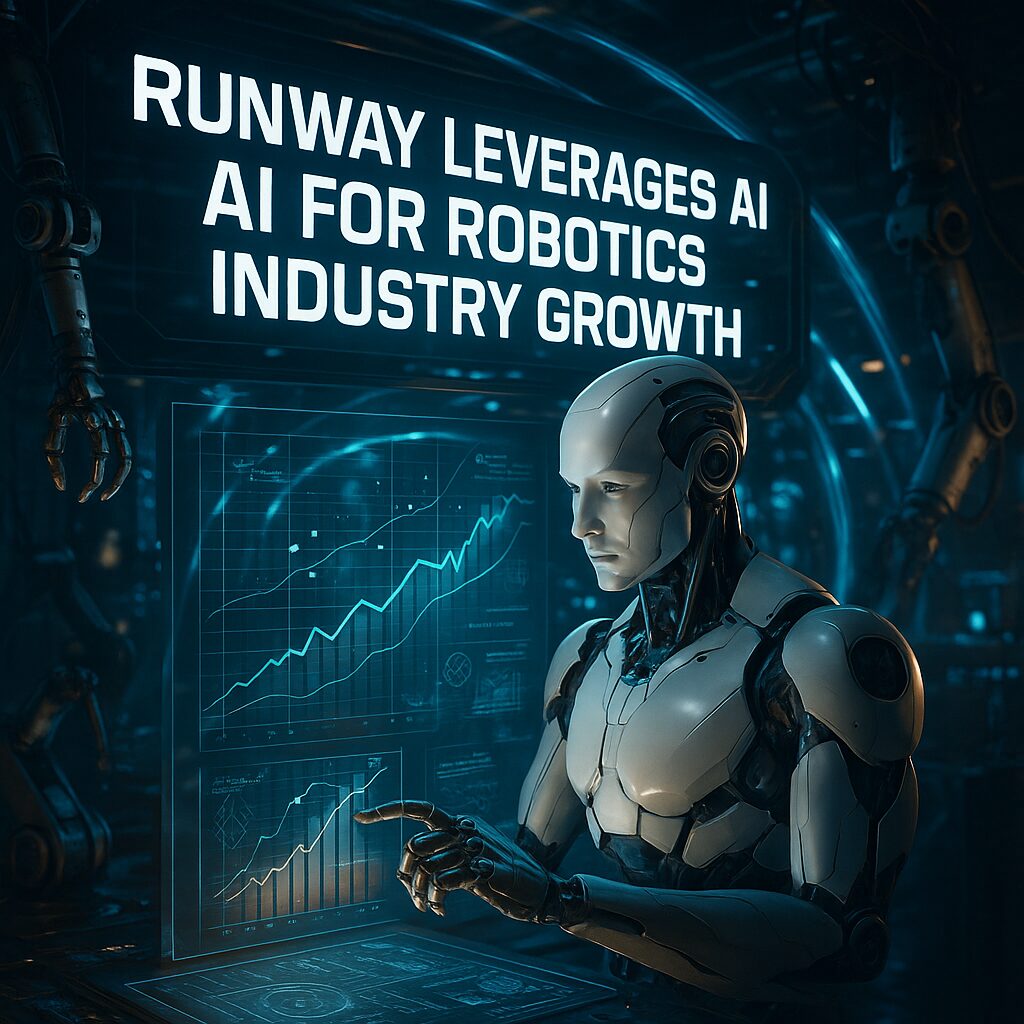
Why Runway is eyeing the robotics industry for future revenue growth
“`markdown
# Runway’s Leap Into Robotics: Redefining the Future of Training Simulations
In today’s rapidly evolving technological landscape, the intersection between creative innovation and practical application is shaping the future across industries. A breakthrough moment has emerged as Runway, a pioneer in visual-generating AI models, shifts its focus towards the robotics industry. This move not only broadens the horizon for Artificial Intelligence but also sets a new precedent for scalable and cost-effective training methodologies.
## A Creative Genesis Meets Technological Demand
Founded seven years ago in New York, Runway has dedicated itself to developing advanced visual-generating tools aimed primarily at the creative industry. Known for its video-generating AI world models, Runway has made significant strides with the release of Gen-4 and Runway Aleph, models that redefine how we interact with simulated realism. But as these tools gained sophistication, an unexpected interest emerged from robotics and self-driving car companies, as noted by Anastasis Germanidis, Runway’s co-founder and CTO.
**”We think that this ability to simulate the world is broadly useful beyond entertainment,”** Germanidis shared. This realization marked the beginning of Runway’s groundbreaking journey into robotics.
## Real-World Challenges Met with AI Precision
For robotics companies, traditional real-world training posits numerous challenges: it is costly, time-consuming, and often lacks scalability. Here, Runway’s AI models offer a compelling alternative. By providing remarkably specific and controlled simulations, these models allow companies to test myriad scenarios and variables efficiently.
Consider these aspects:
– **Cost-effective Training**: Lower financial outlay compared to physical world testing.
– **Scalability**: Run simulations at scale without the constraints of physical limitations.
– **Precision Testing**: Isolate and test specific variables comfortably.
**Germanidis elaborated,** “Creating those rollouts from the same context, is a really difficult thing to do in the physical world, to basically keep all the other aspects of the environment the same and only test the effect of the specific action you want to take.”
By utilizing these AI models, robotics companies can innovate and refine their automation technologies with unprecedented precision.
## Aligning Strategic Vision with Market Needs
While this pivot into robotics was not a part of Runway’s initial vision, the company swiftly adapted to meet the emerging demand. Other industry leaders, such as Nvidia, have also entered this domain, suggesting a growing market momentum.
Runway plans to refine its existing models further to cater to robotics and self-driving car needs. Notably, this doesn’t imply the creation of a separate model line but rather the fine-tuning of existing technologies and the establishment of a dedicated robotics team.
Germanidis remarked on the adaptability of their vision, saying, **”The way we think of the company, is really built on a principle, rather than being on the market.”** This principle of simulation fosters innovation across multiple industries, making advanced models applicable in varied contexts beyond their initial designs.
## The Learning Moment: The Value of Flexibility
Runway’s journey underscores the importance of remaining open to unforeseen opportunities. Initially targeting the entertainment industry, the company discovered a broader horizon when they observed technological applicability in robotics. This expansion wasn’t only a strategic business move but also a lesson in the potential of adaptive thinking.
– **Adapting to Market Needs**: Innovate by aligning capabilities with emerging market demands.
– **Cross-industry Application**: Recognize and explore applications outside initial market boundaries.
– **Iterative Growth**: Continuously refine and develop core competencies to serve new verticals.
This narrative reflects the shifting tides in tech industries, where flexibility and adaptability are not just advantageous but essential for sustained growth and impact.
## Future Engagement: What Will You Innovate Next?
As AI continues to redefine boundaries and reshape industries, we must ask ourselves: How can we, as innovators and consumers, harness this momentum? What roles will these advanced simulations play in creating safer, more effective, and more sustainable technologies? And how will your industry integrate similar methodologies to innovate for the future?
In this era of rapid technological advancement, the possibilities are boundless, and the only limit is the breadth of our imagination and the daring of our visions.
The infrastructure for this next wave of innovation is being laid today. How will you ride this wave to bring about transformative change in your world?
“`

